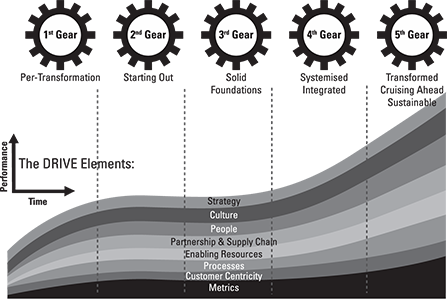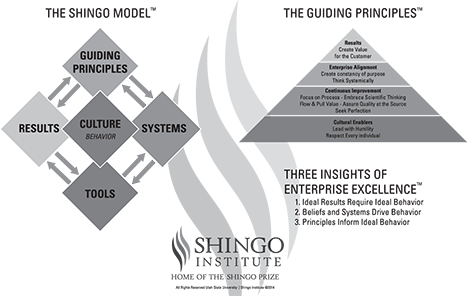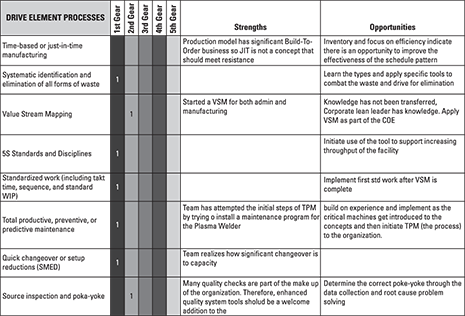Chapter 14
Managing the Capability Maturity Journey
In This Chapter
![]() Getting to grips with the capability maturity road map
Getting to grips with the capability maturity road map
![]() Creating the capability maturity matrix
Creating the capability maturity matrix
![]() Sticking to the route
Sticking to the route
This chapter looks at pragmatic approaches to establishing Lean Six Sigma capability maturity during an ongoing multi-year business transformation programme. As you start out on the LSS transformation journey, you need to be able to establish whether the organisation is developing the required capability to execute the organisational transformation. It is essential that the organisation has the necessary resources and skills to enable it to successfully implement the improvements necessary for achieving the business transformation.
Introducing the Capability Maturity Model
In Chapter 3 we introduce the capability maturity roadmap for the business transformation and we briefly introduce several approaches based on different models. In this chapter we take a look at a specific capability model approach based on the DRIVE model.
The DRIVE capability maturity model has two aspects. The first is the five ‘gears’ that represent an increasing level of capability over time. The gears are rated from first to fifth and an organisation is expected to go up a gear as it accelerates the rate of transformation over several years.
The second aspect of DRIVE is its eight elements, which are the key focus areas that drive the business transformation. These two aspects are illustrated in Figure 14-1.

Figure 14-1: The DRIVE model for assessing capability maturity.
Working through the gears
The DRIVE model is based on the following five gears, which represent the organisation’s evolving maturity:
- 1st gear – Pre-transformation: Approaches to transformation unstructured and tactical; need is recognised.
- 2nd gear – Starting out: Starting points defined and communicated, transformation infrastructure created, strategy deployment established, initial skills in place, short-term wins achieved.
- 3rd gear – Solid foundations: Plans aligned to strategy, organisational capability assessed, gaps identified, first tranche improvements delivered, ability to launch and support transformation projects established, culture compatible with roll-out of continuous improvement.
- 4th gear – Systemised, integrated: Approaches fully deployed across the organisation, regular monitoring of improvement activity performance, continuous improvement is fully integrated within normal business and end-to-end value streams.
- 5th gear – Transformed, cruising ahead, sustainable: Continuous improvement programmes systematically used to gain market advantage, extended enterprise multiplier, innovation and breakthrough, thought leadership, outstanding results; continuous improvement culture spans extended enterprise.
Examining the elements
The DRIVE model involves the following eight elements:
- Strategy: Strategy is based on a business vision and is goal orientated; strategies and systems are aligned across the organisation; strategy deployment is in place, together with goal setting that’s cascaded down to the point of impact.
- Culture: A culture of continuous improvement is developed over time. New leadership, behaviour and ethics become embedded in the organisation.
- People: A training system is established to develop employees; staff are empowered and involved; a reward and recognition policy is in place; staff are aware of health and safety protocols.
- Partnership and supply chain: Value streams are managed and leveraged end to end; the organisation collaborates with suppliers and partners for strategic gain.
- Enabling resources: The resources needed to deliver the strategic goals are identified and exploited, including finance, IT, asset management, buildings and equipment, security, and employee safety.
- Processes: Organisational processes and continuous improvement are related throughout the organisation; a value-stream approach is applied (rather than a functional approach); employees are able to discuss a process or problem, suggest improvement ideas, implement suggestions, evaluate impact and adjust as necessary; business processes are standardised from department to department.
- Customer centricity: Customer focus and relationship management are at the centre of the organisation; product/service development and delivery are based on customer CTQs.
- Metrics: The organisation measures itself on the customer experience of cost and productivity; it tracks significant trends; it compares its performance to that of competitors or specific industry performance levels; organisational behaviours are aligned with desired results.
Building the Capability Maturity Matrix
Most organisations planning to implement a business transformation are doing so to differentiate themselves from their competitors in specific market sectors, and their business strategies provide the direction and timescale for achieving their goals. This means that each business transformation is unique and specific to a particular organisation and, although generic capability maturity road maps can provide a useful starting point for the business transformation, a customised road map is necessary.
Each organisation will need to develop a capability maturity road map for their specific business transformation. The capability roadmap comprises the eight DRIVE elements on the vertical axis and the five gears (maturity levels) on the horizontal axis in an 8 × 5 matrix. This layout makes it very easy to assess the maturity of your process against the maturity descriptions in the matrix. Each maturity level will need to be described in enough detail to allow an assessment of performance to be carried out.
An example of a generic capability maturity description for the strategy component of the DRIVE capability maturity model is shown in Figure 14-2.

Figure 14-2: Example of the strategy component in the capability maturity model.
Assessing capability maturity
Many organisations base their organisational assessments on well-known assessment methodologies such as the EFQM, Baldrige and Shingo Prize models. We discuss these assessment methods in Chapter 5. These methods provide an excellent set of assessment criteria and require experienced assessors to obtain evidence of conformance to them. The EFQM assessment process is illustrated in Figure 14-3 and the Shingo Prize Model™ is shown in Figure 14-4. The Baldrige assessment model is shown in Chapter 5.Typically, these assessment approaches use a numerical rating scale based on achievement of specific outcomes. You establish maturity levels based on the numerical scores as you design your specific capability road map.

Figure 14-3: EFQM Excellence Model.

Figure 14-4: The Shingo Prize assessment model.
Using effective assessment tools
You need to consider the level of detail that you can obtain for the top-level of assessment. Typically, assessment criteria can be quite high level in the first place; for example, a typical assessment question might require evidence that ‘all operational and support processes are defined and managed’. This level of question may not be specific enough, however, to provide a realistic view of specific component-level capability, particularly in relation to Lean Six Sigma tools and techniques. In that circumstance, for example, you may want to establish that ‘daily management has been sustained by the plant manager within all areas of the site’.
We recommend that you implement two levels of maturity assessment. First, strategy-level assessment, which is conducted annually and provides input to the strategy deployment process that we discuss in Chapter 8, as well as top-level assessment of capability maturity. Second, DRIVE component assessments, which are conducted during the year to provide input at plant or functional level.
Going through the assessment process
We recommend using a two-stage assessment process:
- Stage 1 – Self-assessment: An internal self-assessment using a structured questionnaire tool which allows site leaders and/or key personnel to gain a better understanding of the required standards; to apply critical thought to the current state; and to formulate next steps based on gaps and business needs. This assessment typically takes two days.
- Stage 2 – Peer assessment: Carried out by external assessors, this is designed to calibrate the findings of the self-assessment. The same structured questionnaire is used, typically by assessors from other sites or locations. It provides an opportunity for knowledge transfer.
The peer assessment process typically takes two to three days, but may be significantly longer depending on the number of operations or divisions to be assessed and the size of the assessment team. On the first day all assessors meet with the management team to receive a brief overview and undertake a tour of the organisation. The team then disperses into smaller groups in order to observe as much of the organisation as possible and reconvenes at the end of the day to discuss their observations. The second day is a continuation of small-group observations, culminating with the team gathering and beginning formal development of the assessment summary. Figure 14-5 illustrates the assessment process.

Figure 14-5: Capability maturity assessment process.
The assessment process establishes a baseline of strengths and weaknesses in relation to the DRIVE elements at both strategy and individual level. Self-assessments will ideally address the whole organisation or substantial units or locations within it. The two-stage assessment process also aims to improve cross-divisional participation and leadership engagement.
Developing customised questionnaires
Questionnaires need to be developed for the capability maturity assessments at the strategic level and for each of the DRIVE components (see Figure 14-6). The strategy-level assessment questionnaire must include questions that will assist the assessor in establishing the maturity level (gear) for each of the DRIVE elements described in the capability maturity road map. For the strategy-level assessment, it may also be possible to adapt existing assessment tools, such as EFQM, to provide appropriate questions to assess maturity levels (gears).
The element-level assessments will require more development because the questions will be more detailed and tool or process specific.

Figure 14-6: Example component-level questionnaire.
Choosing assessors
The corporate or regional Lean Six Sigma programme management office (refer to Chapter 10 for more on this) typically provides an assessment service for the organisation. Key members of the programme management office need to be trained in the assessment methodology. The role of this team is to provide support during the peer assessment process, and its members will typically have specialised consulting skills and more advanced transformation experience.
In cases where the organisation is already using an assessment methodology, such as EFQM, at the strategy level, trained assessors may be available to support the customised capability maturity assessments. Alternatively, external consultants can be used to support the assessment process.
Peer assessments are usually carried out by representatives from other sites or plants and will typically include members of the operational leadership team as well as programme management office members. Use of operational leaders for the assessments enables the sharing of knowledge and best practice between locations, which also assists in the creation of standards across the organisation. An additional benefit of peer assessment is that it enables operational teams to prioritise the order in which improvements are undertaken to maintain alignment with objectives, which prevents them from overloading the system with projects and change initiatives.
Checking out assessors’ skills
Assessors need to be trained by the transformation programme management office team (refer to Chapter 10) in the assessment process and have experience in conducting structured assessment interviews. They require good analytical skills, and should preferably be experienced Lean Six Sigma Black Belts. Assessors should also have a good working knowledge of the business and ideally be familiar with the following functions:
- Human resources management
- Supply chain management
- Finance
- Marketing and sales
- Operations management
Interpreting the outcome
On completion of the assessment observations, the assessment team need to analyse the results and conduct a gap analysis, comparing actual results with the planned maturity level (gear) to establish gaps in capability. Every assessment should include a gap analysis. A gap analysis involves the assessment team comparing each of the planned DRIVE capabilities defined in the capability road map with the actual capability observed. We recommend that, for each of the gaps in capability, you define countermeasures to establish their root cause and identify corrective actions to address them.
Monitoring the Capability Maturity Journey
You need to be able to assess your organisation’s capability maturity so that you can keep track of the business transformation programme’s progress and identify components that are lagging behind and require additional focus. In addition, capability maturity assessment provides valuable input to the annual strategy scan and strategy deployment processes to ensure that the organisation is capable of deploying annual process improvement plans. In the light of assessment results, critical objectives and focus areas can be reviewed in relation to actual capability, thus permitting realistic annual process improvements to be identified. For example, if during strategy deployment a need for a new process is identified, people with DMADV expertise will be required. If this capability is not currently available, action must be taken to address the situation.
Dealing with changes of direction
Although a possibility always exists that unexpected events, such as a hostile takeover, may cause a dramatic change of direction, generally changes in strategy are driven through the annual strategy planning process.
If a major change in business strategy is necessary, it’s likely to result in changes to the strategy deployment planning process (which we discuss in Chapter 8). Longer-term critical objectives may change, resulting in a change of both focus areas and the short-term process improvements with which they’re aligned. The capability maturity road map needs to be reviewed and updated to maintain alignment with the new strategic direction, and current levels of capability need to be reviewed to ensure that the organisation is able to effectively implement the process improvements.
Constantly updating the route
The business transformation is an ongoing process that needs to be assessed on an annual basis and, from time to time, realigned with the organisation’s evolving long-term strategic vision. Strategy deployment supported by constantly developing capability and a transformational culture will provide the necessary foundations for a successful business transformation.

 Whichever assessment tool you select, ensure that it provides assessment based on levels of capability maturity.
Whichever assessment tool you select, ensure that it provides assessment based on levels of capability maturity.